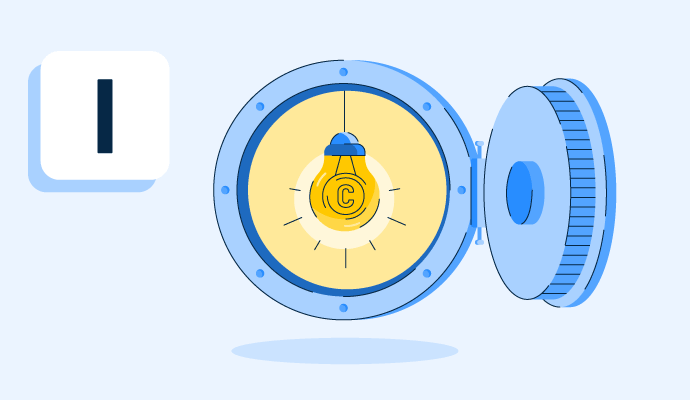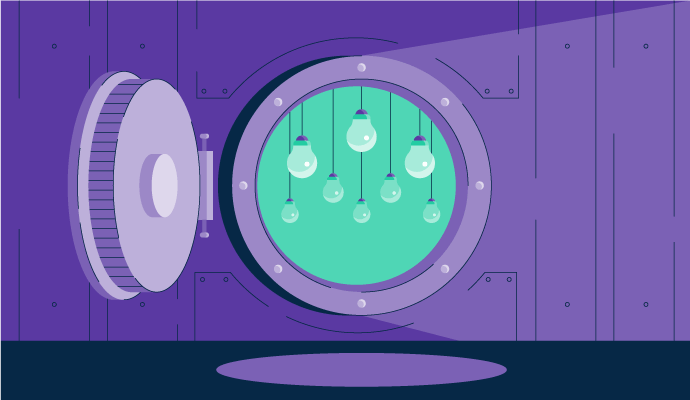What is intellectual property?
Intellectual property (IP) is a group of intangible assets legally owned by a business. These assets are protected and cannot be used outside the company without the organization’s consent.
As intangible assets, IP has the same level of protection as if the property were a tangible asset. If another company or individual attempts to use the IP without permission, this is considered theft, and legal action can be taken.
Businesses often have several types of IP at once, so they use intellectual property management software to track and manage their current holdings.
Types of intellectual property
There are four main types of IP that a business can hold. These are:
- Copyrights. This type of IP gives creators of original materials exclusive rights to the work’s use and duplication. Authors, musicians, artists, and digital creators typically hold copyright over their work. Owners can choose to grant others access to the work through licensing agreements.
- Patents. A patent can only be claimed if filed officially through the U.S. Patent and Trademark Office. These give owners exclusive rights to inventions they have created, which include blueprints and designs. These are most commonly used by technology companies looking to retain control over their software or hardware creations.
- Trademarks. A trademark is a symbol or phrase that identifies a brand or product. Company logos and slogans are usually trademarked, along with the brand name, to prevent others from duplicating them and confusing customers.
- Trade secrets. Any information that may give an economic advantage and is not public knowledge can be considered a trade secret. For businesses, research and development secrets typically require non-disclosure agreements to be signed so that this type of IP doesn’t become accessible to competitors.
Basic elements of intellectual property
No matter the type of IP a business has, managing these comes down to three important elements. These are:
- Protection. For most businesses, IP is necessary for protecting critical business information that could provide competitive intelligence to another business. This is especially the case where patents are filed, or trade secrets are being kept.
- Monetization. IP is usually a key source of revenue for a business. Copyrights and trademarks stop other businesses or individuals from making money from a brand’s image or work, while licensing IP to other users can generate income for a business.
- Optimization. All business assets should be continually reviewed for their potential value, which extends to intangible assets like IP. These assets can cost a business money to set up and maintain, while others can bring in additional revenue. Optimizing these assets can improve decision making and generate income.
Benefits of intellectual property
Any IP a business holds has value. While some have more tangible value than others, protecting IP comes with several benefits, including:
- Increasing the market value of the business. Lucrative IP being held by a company can be an attractive prospect for investors or venture capitalists. If a business embarks on an exit strategy like a merger or acquisition, these assets can become even more important in getting a fair price during negotiations.
- Making ideas revenue drivers. Selling licenses to IP can turn intangible assets into significant sources of income for a business.
- Improving a brand’s image. Many big brands are instantly identifiable via their logo or slogan. These differentiate the business from other similar ones, which is essential for an effective marketing strategy.
Best practices for intellectual property
Even if a business has very few IP assets, it’s still important to incorporate best practices into its creation and management as early as possible.
- Review IP frequently. Not all IP needs to remain as IP forever. Some creators may license their work for a fixed amount of time before making it publicly accessible or selling the IP, while others may want to keep their exclusive rights indefinitely.
- Mitigate risk where possible. All IP comes with some risk, but frequent reviews and data-driven decisions can protect IP from some of these challenges. This is especially important when developing new property that may not yet be protected. Measures should be taken to keep this information secret until a patent or trademark is established.
- Centralize IP management. As a business acquires or develops more IP, it’s easy for older IP to become lost or forgotten. By centralizing all IP management in a single database, key team members can easily make updates or look for information relating to these IPs.
Keep your business’s most important assets private with data privacy management software.

Holly Landis
Holly Landis is a freelance writer for G2. She also specializes in being a digital marketing consultant, focusing in on-page SEO, copy, and content writing. She works with SMEs and creative businesses that want to be more intentional with their digital strategies and grow organically on channels they own. As a Brit now living in the USA, you'll usually find her drinking copious amounts of tea in her cherished Anne Boleyn mug while watching endless reruns of Parks and Rec.

